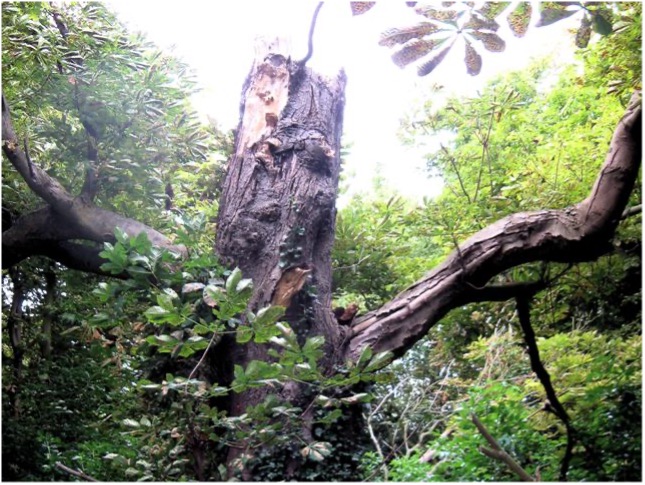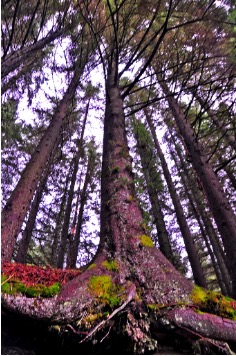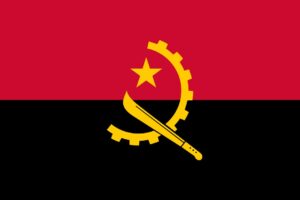
Figure 1: At first glance, this tree appears to have human-like facial features. This review discusses the ways that trees communicate in real life
Source: Wikimedia Commons
An article called “The Social Life of Forests” came out in the New York Times in early December 2020 suggesting that trees can speak to one another, answering the age-old question of “if a tree falls in a forest and no one is listening, does it even make a sound?” Perhaps the trees are listening. How exactly could trees communicate with one another? The answer is mycorrhizal networks. Mycorrhizal networks, also referred to as CMN, are underground networks formed by mycorrhizal fungi that connect individual plants and transfer nutrients like water, carbon, and nitrogen. The following articles detail the ways that fungi function within ecosystems and tree species, how mycorrhizal networks work, a commentary on mycorrhizal network analysis, and a review of “The Hidden Life of Trees.”
“Mycorrhizal networks: a review of their extent, function, and importance.”
In this article, Suzanne Simard, a source for “The Social Life of Forests”, and Daniel Durall discuss the purpose and importance of mycorrhizal fungi. Mycorrhizal fungi can inhabit different plant species, develop links between them, and provide a pathway for an interplant transfer of carbon, nitrogen, phosphorus, or water. Simard discusses the way that these transfers have been seen as involved in the establishment of sink gradients between plants. Microrrhizal networks have the potential to influence seedling establishment patterns and plant diversity, as well as plant community dynamics. The article reviews recent literature on mycorrhizal networks, interplant carbon transfer, and network influences. Simard and Durall suggest routes and additional techniques for further research.

Figure 2: A picture of Suzanne Simard
Source: Wikimedia Commons
This study by Catherine E. Lovelock and John J. Ewel focuses on the relationships between plant and mycorrhizal fungal diversity, along with how those connections impact an ecosystem’s function. Their study takes place at the La Selva Biological Station in Costa Rica where 12-year-old forestry plots with monocultures and polycultures of tree species were compared. By analyzing the abundance of arbuscular mycorrhizal fungal spores, the researchers found that host tree species had a significant effect on the fungal community. Positive relationships were found between the arbuscular mycorrhizal fungal diversity and ecosystem productivity. Through their research, it was concluded that the mycorrhizal fungal community composition in tropical forests is sensitive to host species.
“Missing nodes and links in mycorrhizal networks”
Maarja Öpik offers a survey of mycorrhizal networks and critiques comments like those of Lovelock and Simard’s presented earlier. She suggests that not enough studies have sought to describe the way that mycorrhizal fungal communities associate with a large portion of a plant community, and offers additional scientific literature to stimulate discussions on this topic. The paper discusses how researchers measure network analysis, especially when fungal communities bring together plant communities. Additionally, she discusses the nestedness of plant communities, conclusions that can be made from network structures, and autecological traits of network structures.

Figure 3: A peaceful forest grove
Source: Flickr
The Hidden Life of Trees and a Critique, “Facts or Fairy Tales? Peter Wohlleben and the Hidden Life of Trees”
Peter Wolleben’s book, The Hidden Life of Trees: What they Feel, How they Communicate—Discoveries from a Secret World, at first appears mystical and based mainly in fiction with chapters titled “Plants and ESP” and “Plants Will Grow to Please You.” However, much of the book actually talks about forest ethics, the idea that trees should be allowed to live undisturbed by humans in order to live a full life in a way appropriate to their species. Sharon Kingsland notes that the book has infuriated forest scientists but intrigued the everyday person with thoughts of trees’ social needs. Behind the fanciful ideas that trees that have faces and personalities, Kingsland points out that some truth may still exist in Wollben’s book, citing Suzanne Simard’s research on mycorrhizal networks above. The critique that Kingsland takes away from The Hidden Life of Trees is one that many of the authors listed above can agree on: there needs to be more literature on plant science and interaction.
For more on tree communication through “infinite biological pathways”, see Suzanne Simard’s 2016 TED Talk: https://www.youtube.com/watch?v=Un2yBgIAxYs
References
Kingsland, S. E. (2018). Facts or Fairy Tales? Peter Wohlleben and the Hidden Life of Trees. Bull Ecol Soc Am 99(4):e01443. https://doi.org/10.1002/bes2.1443
Lovelock, C., & Ewel, J. (2005). Links between Tree Species, Symbiotic Fungal Diversity and Ecosystem Functioning in Simplified Tropical Ecosystems. The New Phytologist, 167(1), 219-228.
Maarja Öpik. (2012). Missing nodes and links in mycorrhizal networks. The New Phytologist, 194(2), 304-306
Simard, S., & Durall, D. (2004). Mycorrhizal networks: a review of their extent, function, and importance. Canadian Journal of Botany. 82 (8): 1140-1165. https://doi.org/10.1139/b04-116
Wohlleben, P. (2018). Hidden life of trees: What they feel, how they communicate. Vancouver Berkeley; Greystone Books
Related Posts
George Washington Carver: “The Peanut Man”
Figure 1: George Washington Carver: “The Peanut Man” (Photograph ca. 1910)...
Read MoreThe Environmental Consequences of Civil Wars
Figure 1: This is the flag of Angola, the model...
Read MoreWhale Size Correlates with Feeding Pattern Efficiency
Figure 1: Blue Whale Surfacing off the Coast of Oregon...
Read MoreSaugat Bolakhe



